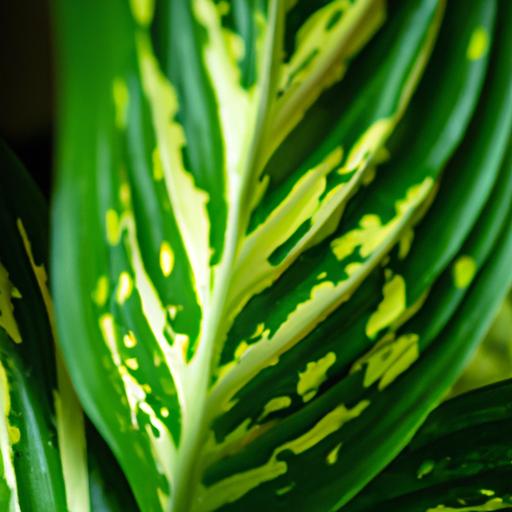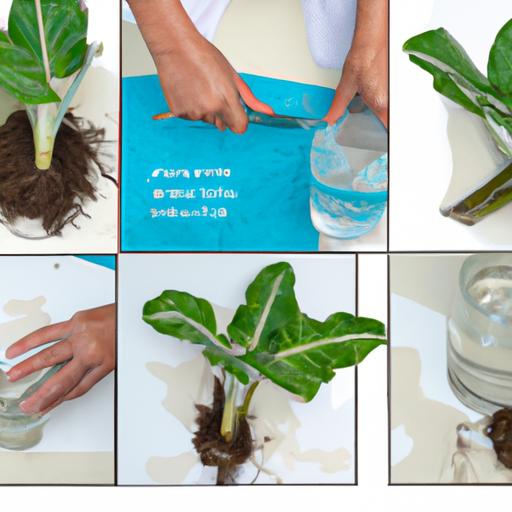Learn how to propagate dieffenbachia in water with our step-by-step guide. Discover the benefits of dieffenbachia propagation in water. Rowe Organic.
Are you a plant enthusiast looking to expand your collection? Or perhaps you want to share the beauty of dieffenbachia with friends and family? Look no further! In this guide, we will explore an easy and effective method of propagating dieffenbachia plants in water. Whether you’re a seasoned gardener or just starting out, water propagation offers a simple and rewarding experience. So, let’s dive in and learn how to propagate dieffenbachia in water!

Understanding Dieffenbachia Propagation
Before we delve into the specifics of water propagation, let’s gain a basic understanding of dieffenbachia propagation. Dieffenbachia, also known as dumb cane, is a popular houseplant cherished for its vibrant foliage. Propagation is the process of creating new plants from existing ones, allowing you to multiply your collection without spending a fortune.
While dieffenbachia can be propagated through various methods, including stem cuttings and air layering, water propagation stands out as a convenient and beginner-friendly technique. Not only does it require minimal resources, but it also offers a higher success rate compared to other methods.

Step-by-Step Guide to Dieffenbachia Propagation in Water
Now that we have a grasp of the benefits of water propagation, let’s dive into the step-by-step process:
1. Selecting a Healthy Mother Plant
The first step in dieffenbachia propagation is to select a healthy mother plant. Look for a mature dieffenbachia with vibrant leaves and strong stems. Ensure the plant is free from pests or diseases, as these can hinder the success of propagation.
2. Preparing the Cutting
Once you have chosen the perfect mother plant, it’s time to prepare the cutting. Using a clean, sharp knife or shears, make a diagonal cut just below a node on a healthy stem. Nodes are the points on the stem where leaves emerge. Aim for a cutting that is approximately 6-8 inches long, ensuring it has at least two to three leaves.
Remove any lower leaves, leaving just a few at the top. This will prevent the cutting from wasting energy on maintaining excessive foliage.
3. Placing the Cutting in Water
Now comes the exciting part! Fill a clean glass or container with room temperature water. Place the cutting in the water, ensuring that at least one node is submerged. Be sure to position the cutting in a way that the leaves are above the waterline.
4. Caring for the Cutting During the Rooting Process
To encourage successful rooting, it’s essential to provide optimal conditions for your dieffenbachia cutting. Here are a few tips to ensure its well-being:
- Light: Place the container in a warm, well-lit area away from direct sunlight. Indirect light will promote healthy growth without causing damage to the delicate cutting.
- Water: Regularly change the water every few days to prevent the growth of bacteria and maintain oxygen levels. Ensure the water remains at room temperature.
- Humidity: Dieffenbachia thrives in humid environments. To increase humidity around the cutting, you can cover the container with a plastic bag, creating a mini greenhouse effect.
5. Transplanting the Rooted Cutting into Soil
After approximately 4-6 weeks, you’ll notice roots starting to emerge from the node of your dieffenbachia cutting. Once the roots are around 1-2 inches long, it’s time to transplant the cutting into soil.
Prepare a pot with well-draining soil, preferably a mixture of peat moss, perlite, and potting soil. Create a small hole in the soil and gently insert the rooted cutting, ensuring the node is covered. Lightly press the soil around the cutting to secure it in place.
Water the newly planted cutting and place it in a well-lit area, gradually introducing it to more sunlight over time.
Frequently Asked Questions (FAQ)
Throughout your dieffenbachia propagation journey, you may encounter some common questions. Here are answers to address any concerns you may have:
1. Can any type of dieffenbachia be propagated in water?
Yes, water propagation is generally suitable for most dieffenbachia varieties. However, keep in mind that some cultivars may have specific propagation requirements. Always research the specific needs of your dieffenbachia variety to ensure successful propagation.
2. How long does it take for the cutting to root in water?
On average, dieffenbachia cuttings take around 4-6 weeks to develop roots in water. However, keep in mind that individual plants may have different timelines, so be patient and monitor the progress regularly.
3. What kind of water should be used for propagation?
Using distilled or filtered water is recommended for dieffenbachia propagation in water. These types of water eliminate the presence of harmful chemicals or minerals that could hinder root development.
4. Can I use rooting hormone during the water propagation process?
While rooting hormone is not necessary for dieffenbachia water propagation, it can potentially enhance the rooting process. If you choose to use rooting hormone, follow the instructions provided with the product and ensure it is suitable for use with houseplants.
5. How can I prevent root rot during water propagation?
To prevent root rot, ensure that you change the water regularly, every few days. Additionally, avoid overwatering, as this can suffocate the roots. Proper drainage and aeration are crucial for the health of your dieffenbachia cutting.
Conclusion
Congratulations on learning the art of dieffenbachia propagation in water! This simple and rewarding technique allows you to expand your collection of vibrant dieffenbachia plants effortlessly. By following our step-by-step guide, you can enjoy the satisfaction of nurturing new life and creating your very own green sanctuary.
At Rowe Organic, we are passionate about organic gardening and providing expert tips and inspiration to fellow plant enthusiasts. Visit our website Rowe Organic for more articles on houseplants, gardening, and sustainable living.
So, why wait? Grab your scissors, find a healthy dieffenbachia plant, and embark on your propagation journey. Cultivate, nurture, and grow naturally with Rowe Organic – your green sanctuary for expert tips and inspiration in organic gardening.
